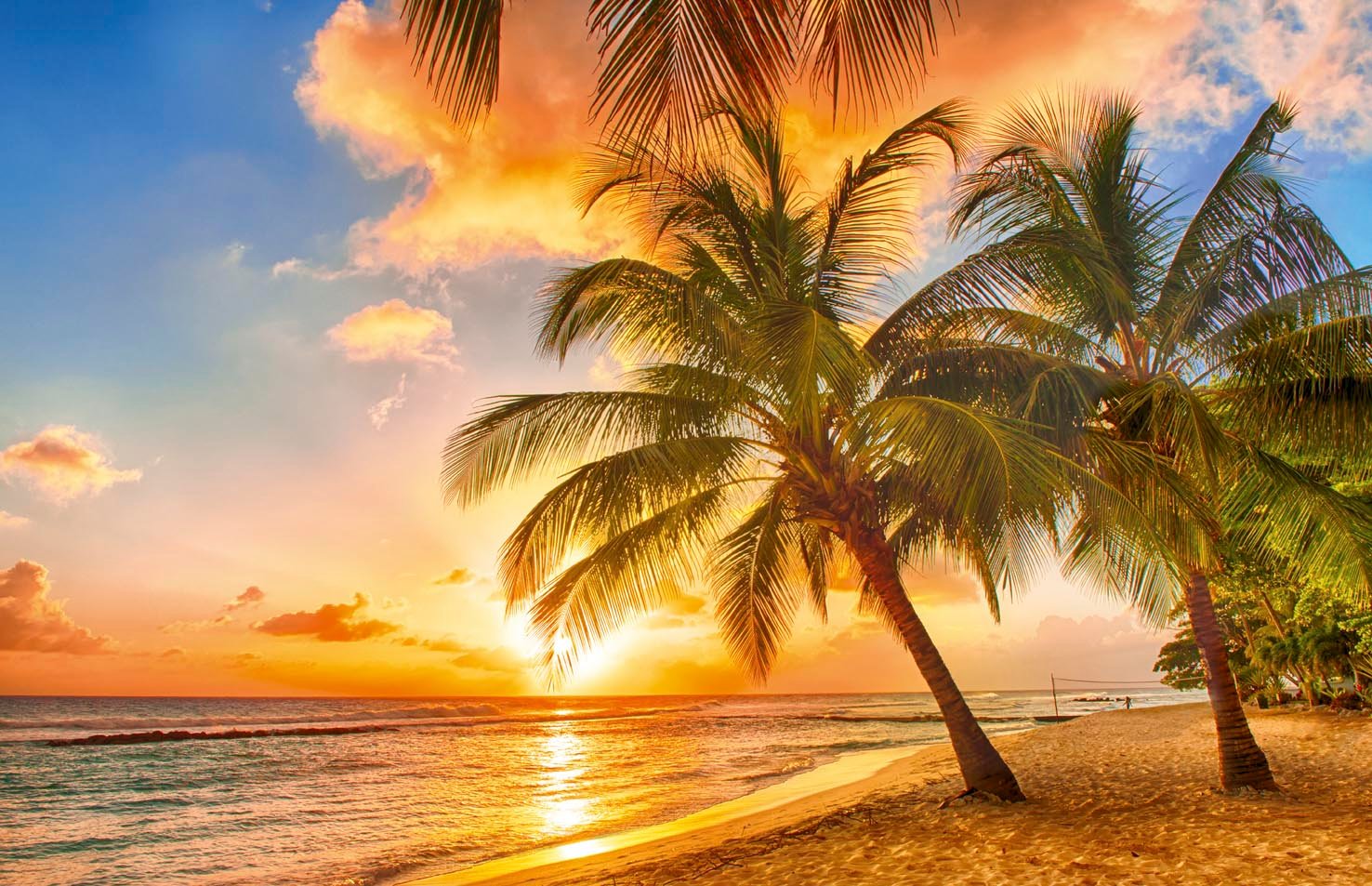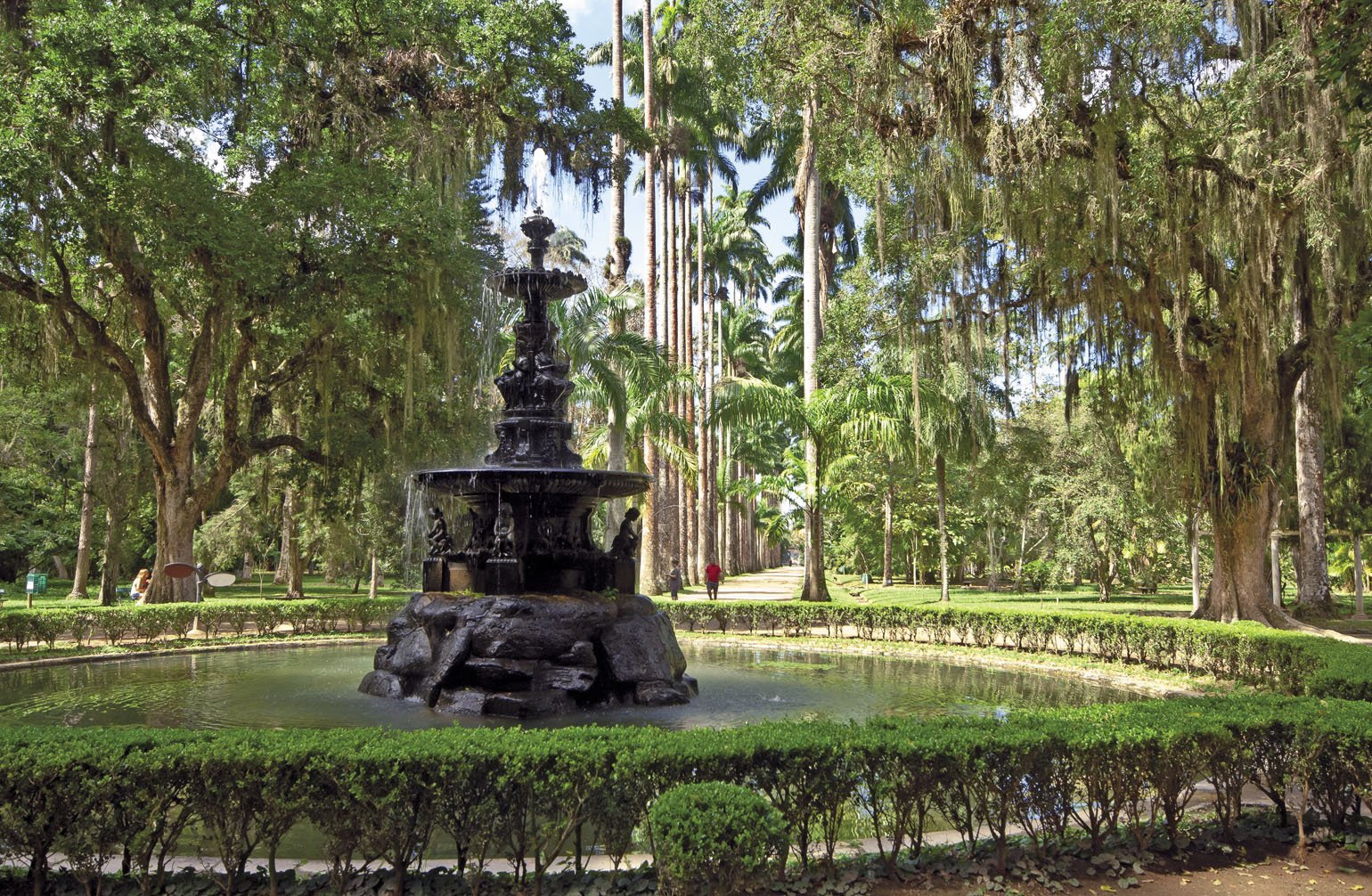
Rio de Janeiro Botanical Garden
Text and Photos: Carlos Eduardo Gómez
After visiting the beaches of Copacabana, Ipanema, and Leblon, and climbing Corcovado, I let myself be seduced by one of the most picturesque and serene icons of this bustling Carioca city. At the bottom of Tijuca National Park, under the right arm of the statue of Christ the Redeemer, in the midst of old mansions, art studios, designer boutiques, restaurants, and bars, I came across the Rio de Janeiro Botanical Garden. It includes 208 acres of natural forest and 133 acres of cultivated areas that house more than 40,000 plants: one of the world’s largest collections of flora. In fact, the Garden, recognized internationally as a living botanical gallery, has been declared a National Artistic and Historical Heritage and in 1991, UNESCO designated it as a Biosphere Reserve.
I enter the visitor’s center by way of Jardín Botánico St., No. 1008, which displays an exhibition of photos and paintings. For an instant I can imagine the air that the royal Portuguese family must have breathed when they arrived in this beautiful coastal city, accompanied by their entourage. They came here to establish the seat of the Imperial Portuguese headquarters at a time when Napoleon threatened to invade all of Europe. On June 13, 1808, the regent prince of Portugal, who later became King John VI, created the Acclimatization Garden to conserve the valuable spices of cinnamon, nutmeg, and pepper they had brought from the East Indies.
Amazed by the natural lushness of the area and charmed by the garden, John planted several trees and plants that he had brought from the most diverse corners of Brazil. Later, Luiz de Abreu Vieira e Silva, a celebrated botanist who escaped from captivity on the island of Mauritius, brought a great quantity of seeds from the famous La Gabrielle Garden to King John to expand his collection. It was then that the monarch decided to call this place the Royal Garden, and place it under the direction of the Marques of Sabará.
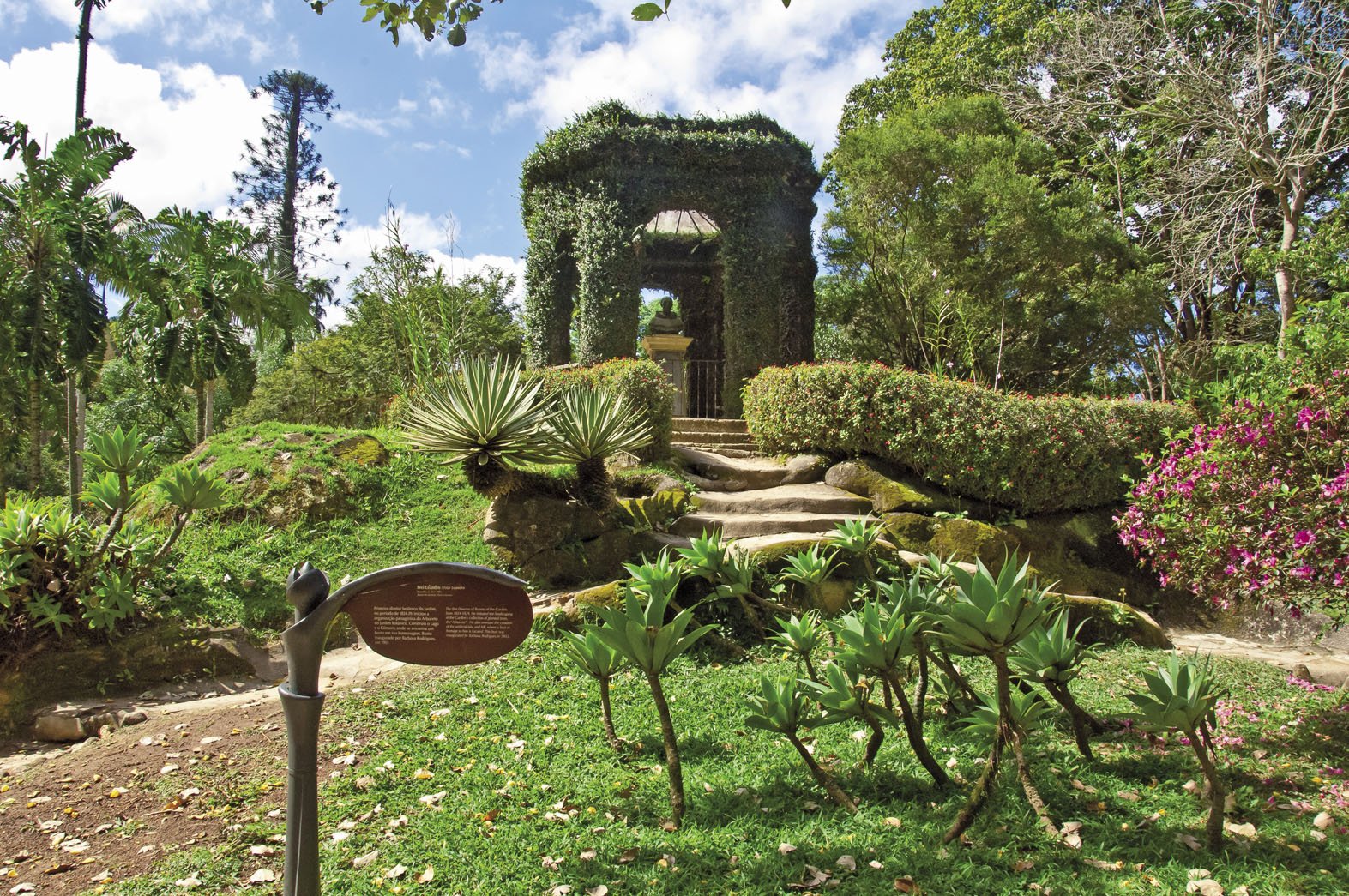
The imperial palm, so called because it was planted by the regent prince, dates to that era. A lightning bolt struck and destroyed it in 1972, but not before it had given origin to all the imperial palms of Brazil. After his coronation as King of Portugal and Brazil, John VI expanded the Royal Garden, creating new gardens, channeling streams, and renaming it the Royal Botanical Garden. In 1822, with the country’s declaration of independence, the Garden opened its doors to the public. Its first director, the Carmelite monk Leandro de Sacramento, an erudite professor of Brazilian flora, organized and catalogued the plants, which today total more than 6,700 species and 40,000 units scattered across this tranquil stretch of land.
With the map I requested when I bought my entrance ticket, I begin to plot my visit. When I find myself in the middle of the vegetation next to the Alameda Warming, I imagine how marvelous Albert Einstein must have felt as he wandered through this protected lung of the city. Along the way I pass waterfalls and paths that climb to the rainforest area with its tropical Atlantic flora, dominated by large trees. The water flows easily here, with several streams and six lakes that host various species of lotus, papyrus, and the singular victoria regia, a plant from the Amazon with large, floating leaves that measure nearly seven feet in diameter. The large flower opens at nightfall and remains open until 9 a.m. the following morning.
The Fray Leandro Lagoon —which won the National Prize for Landscape Design— is surrounded by flowers and sits next to a hill crowned by a bronze bust of the monk Leandro. Another small mirror of water is preferred by the herons, as they stealthily fish for sardines and fingerlings. Here you can find chairs for resting, contemplating the beautiful surrounding panorama, and listening to the sound of the waterfall.
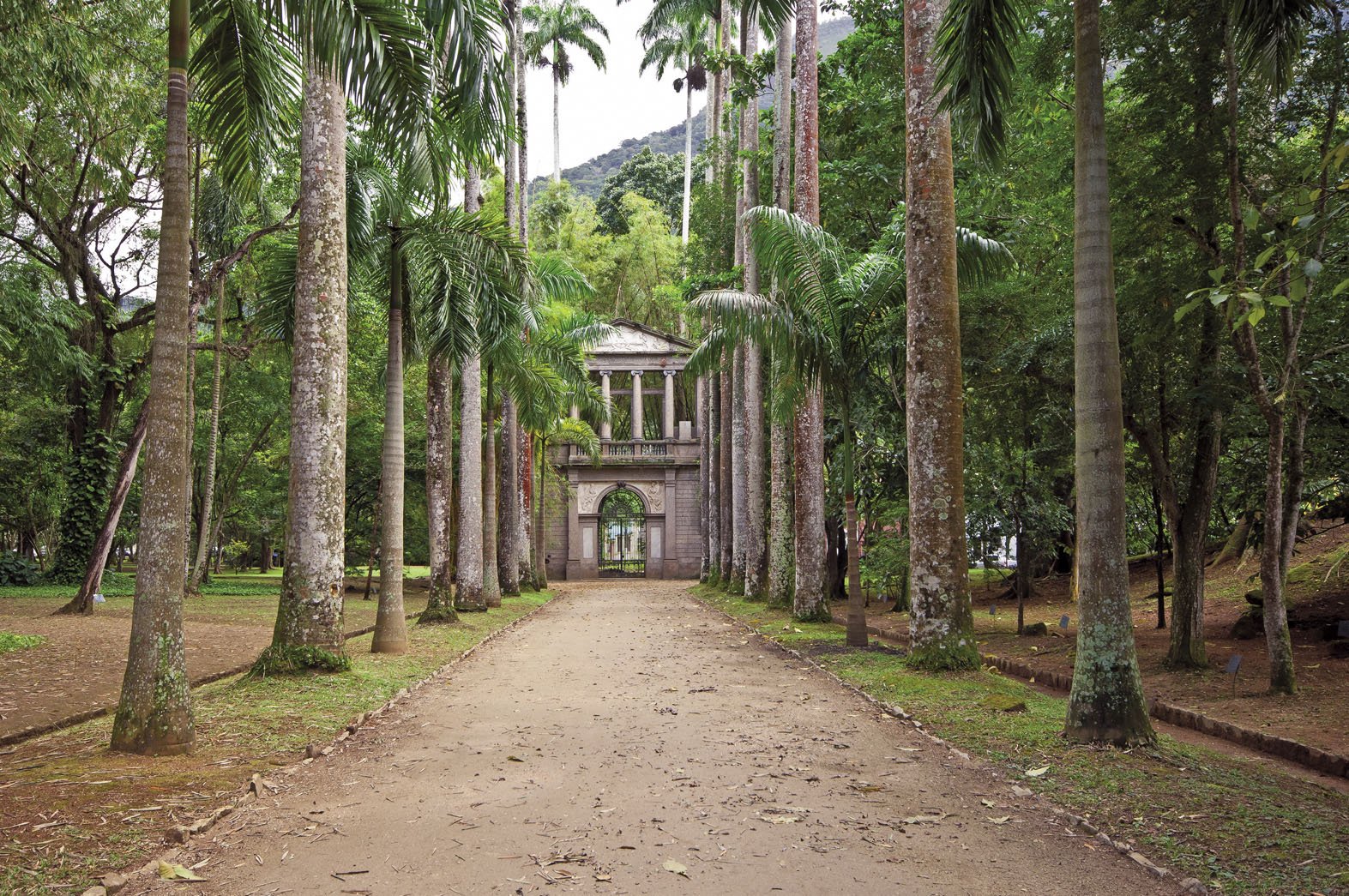
Along the Alameda Alberto Loefgren, you’ll find the orchid greenhouse, where an octagonal-shaped glass dome built in 1890 protects more than seven hundred species of orchids. Legend has it that these monocotyledonous plants amazed Queen Elizabeth II of England with their varied forms, sizes, and aromas and the complicated relationships they have with their pollinators. In addition to the orchids, I admire a great quantity of curly and smooth ferns, plants requiring little sun that are often used to decorate terraces and hallways. Looking outside, through the glass, I marvel at the Heliconias, those beautiful tropical plants also called platanillo for their elongated green leaves. The birds of paradise and lobster claws, named for their bright yellow, orange, and red flowers, also catch my attention. The hummingbirds flutter about, shimmering in the sun and flapping their wings up to eighty times per second. With nimble starts and extraordinary stops, their long beaks are able to feed off the nectar of the Heliconia flowers. I also notice the calla lilies and irises, as aromatic as ginger and cardamom.
Next I come across the Botánico, an old structure that dates back to the end of the 19th century, surrounded by old palms. Very nearby I find the Bromeliad garden, which includes rosette-shaped native plants from the American tropical genus. The bromeliad family, which includes the pineapple, has capricious flowers, which bloom for long periods. It is said that when Christopher Columbus gave the first pineapple to the king of Spain, he erupted in jubilation and ordered it to be planted so that all his people could try it. On the road you’ll see amazing works of art, like the sculpture of the goddess Thetis, created in 1862 by Savageau, in addition to Nymph, Echo, and Narcissus.
Important plant species like Brazilwood, cocobolo, and cedar, are highlighted. All of this makes this a unique place, where a royal horticultural sensibility blends perfectly with the exuberance of a luxurious rainforest. Following the Alameda Brade, you’ll come across the herbarium of African Violets, which are always in bloom, and then the Garden of the Embassies. From there you’ll enter Campos Porto, an alameda adorned with two long rows of cinnamon-colored Trombeteira trees, their tall trunks shining like gold under the sun’s rays.
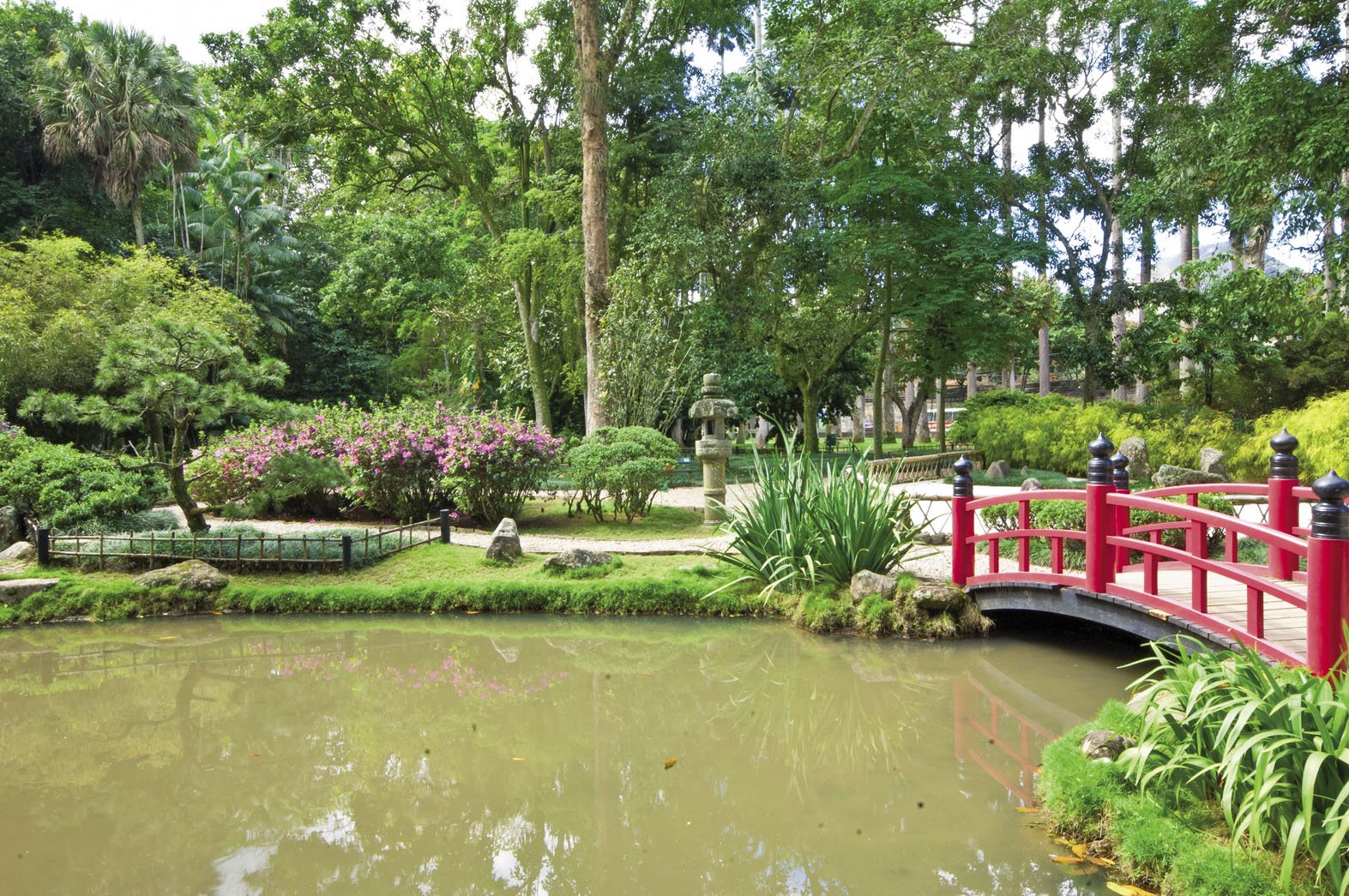
I take another break on a bench in the Japanese Garden. While I eat a snack, I contemplate bonsai trees, the small lagoon of lotuses, and the Japanese-style wooden bridge. I also listen to the trilling of the 140 species of birds that live here or visit this place. And I reflect that we can’t live independently from this ecosystem we inhabit. All life forms are intertwined and the fate of our planet will depend on how we treat the different species with which we share our earth.
I continue the journey and arrive at the Alameda of the Palmeras on Avenue Barbosa Rodríguez (named in homage to the palm and orchid specialist who created the herbarium, the museum, and the library during his tenure, from 1890 to 1909). Two rows of imperial palms stand with their straight trunks that reach up to 131 feet high. That’s where the main entrance is open from 8 a.m. to 5 p.m. I end my journey through Rio de Janeiro’s ecological sanctuary here. I leave with a feeling of peace, rest, and tranquility to once again enter into the bustle of this Carioca city that never sleeps.
Other Useful Information
In addition to the beauty of its living collections, the Rio de Janeiro Botanical Garden has the world’s largest library specializing in the botany of Brazil, containing more than 70,000 volumes, some considered unique works.
The herbarium includes more than 330,000 sheets of dried plants and maintains a collection exchange with similar national and international institutions.
The Carpoteca contains more than 6,000 samples of dried fruit.
The Xiloteca has 8,200 wood samples from 160 families, from Brazil and the rest of Latin America.
The Empress’s former manor house has become the headquarters for the National School of Tropical Botany. It offers complimentary guided tours in electric cars for the handicapped, pregnant women, and people over sixty years old.
